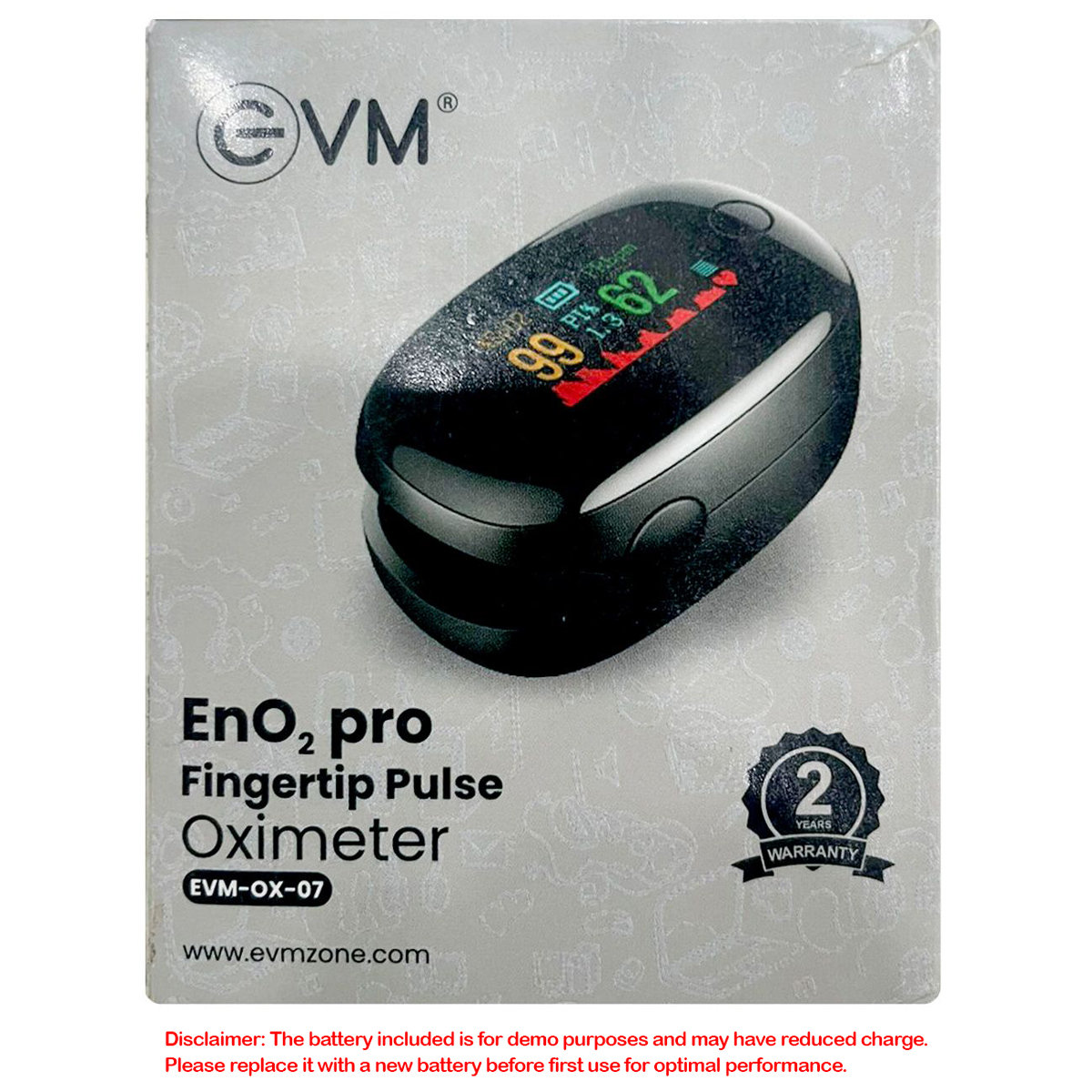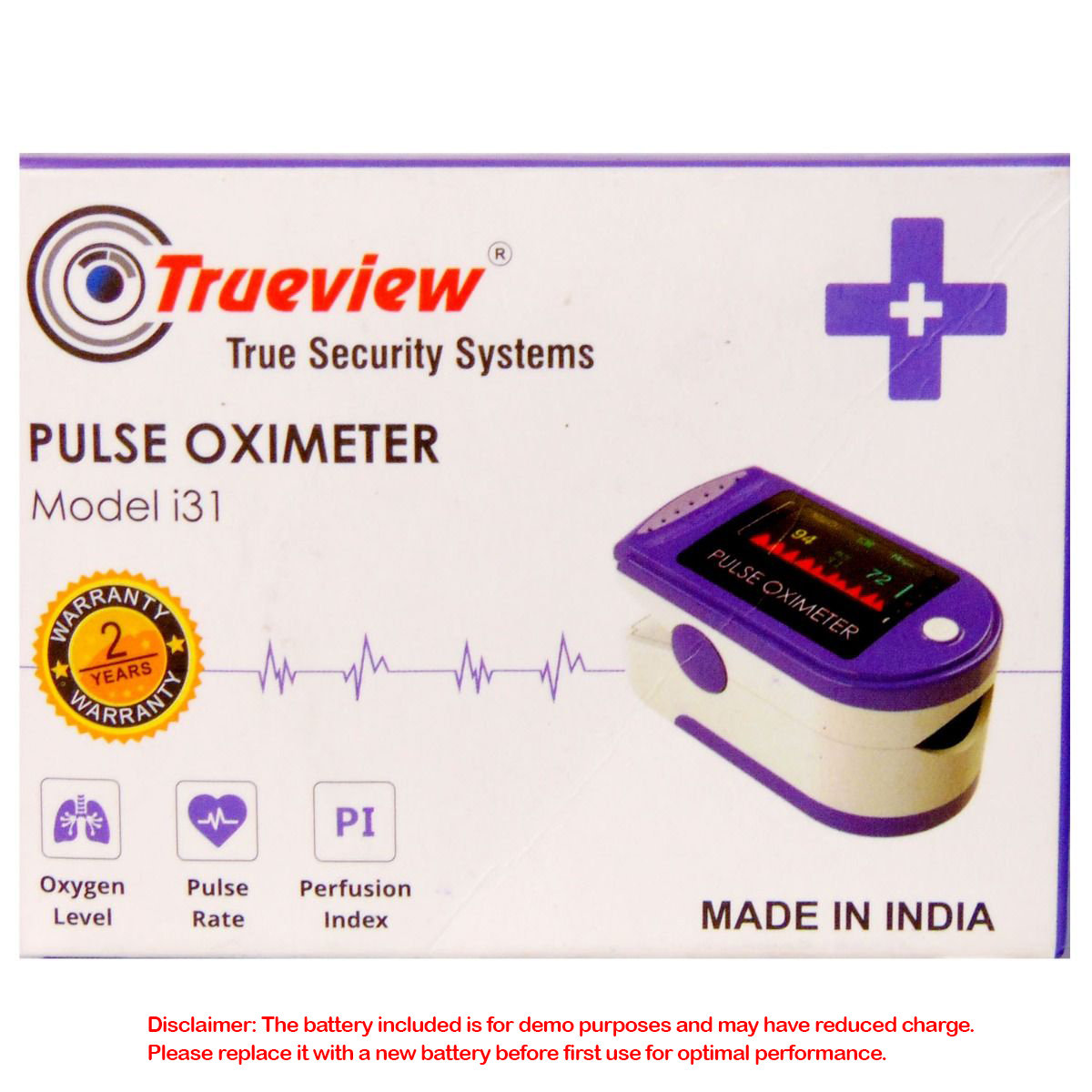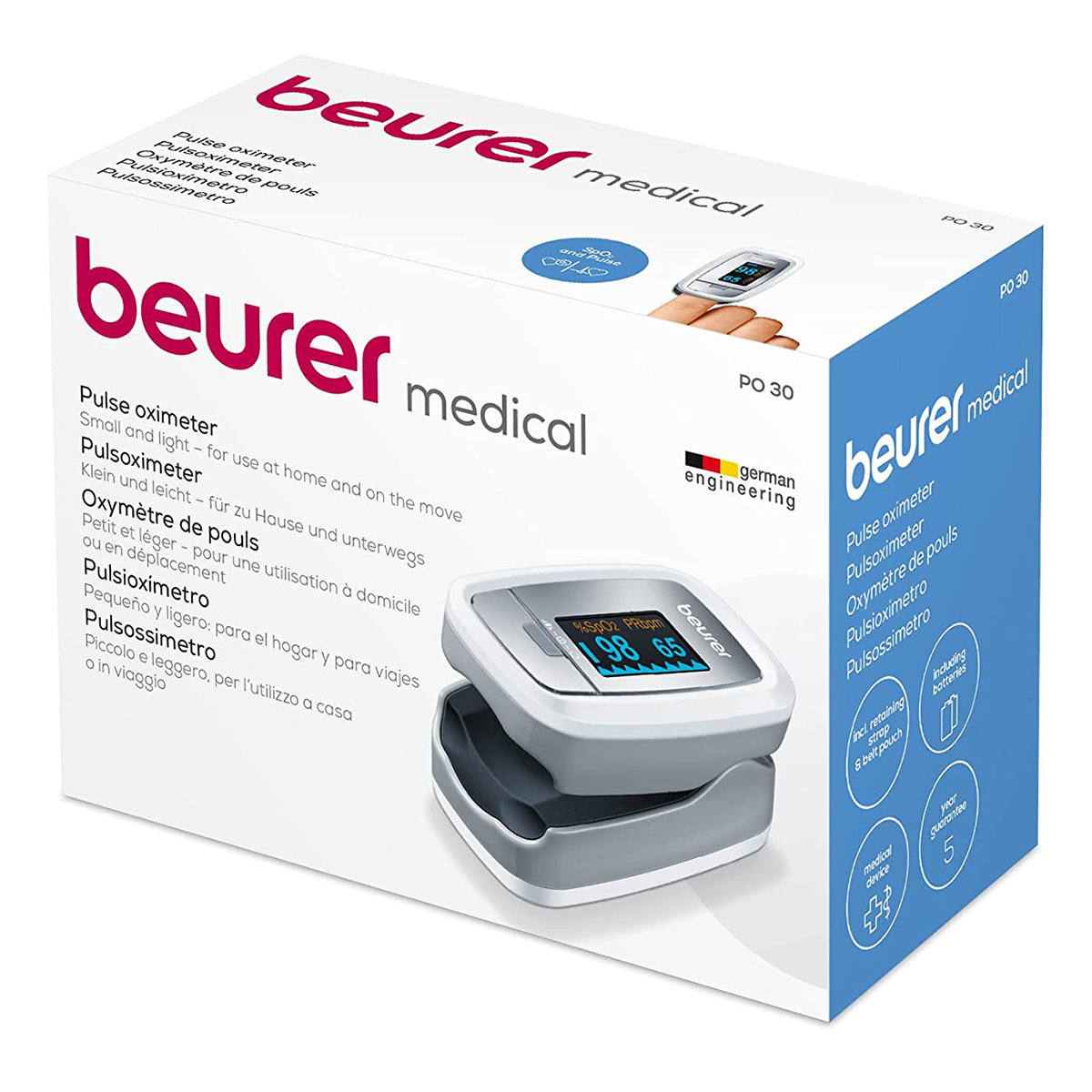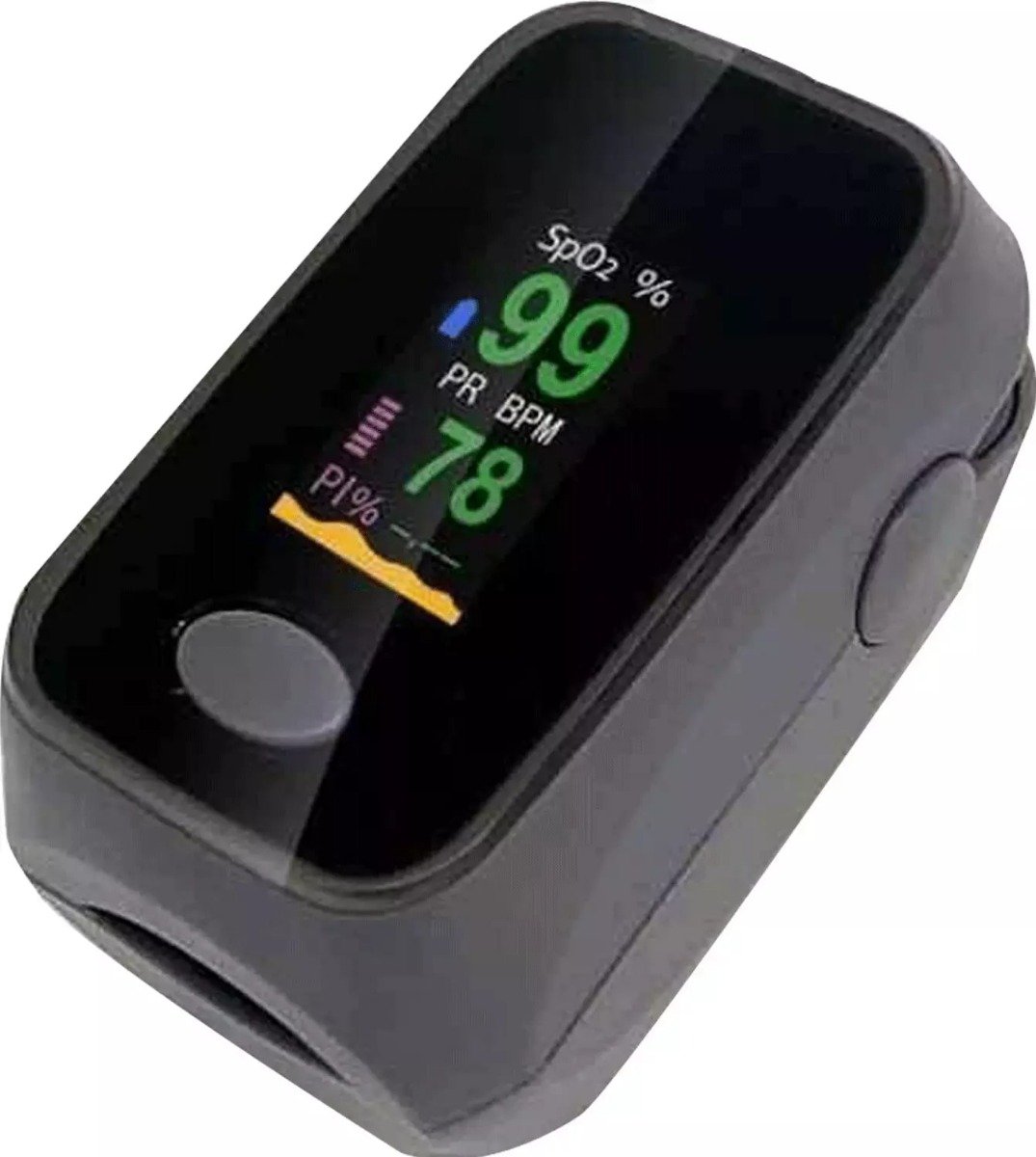Apollo Pharmacy Enoxy Pro Fingertip Plus Oximeter EVM-OX-07, 1 Count

₹899.2
MRP ₹99910% off
(Inclusive of all Taxes)
Get Free delivery (₹99)
Know Your Delivery Time
Provide Delivery Location

Secure Payment

India's Most Trusted Pharmacy

Genuine Products
Manufacturer/Marketer :
Consume Type :
Return Policy :
Description
Experience hassle-free monitoring of your blood oxygen levels with EVM EnOxy+ Fingertip Pulse Oximeter. This oxygen saturation monitor is designed to cater to your comfort and convenience with its simple one-button operation, making it easy for anyone to use. The OLED display shows results clearly, including a strength bar graph, making it easier for you to track your readings. This non-invasive tool attaches painlessly to your fingertip, sending two wavelengths of light through the finger to measure your pulse rate and how much oxygen is in your system. Moreover, this device consumes low power, thus providing long-lasting performance.

Have a query?
Directions for Use
- Read the instruction manual before using.
- Place your finger inside the clamp of the device, ensuring the sensor is properly attached to the finger.
- Press the power button to turn on the device.
- Wait a few seconds until the results are displayed on the OLED screen.
- The readings are shown on the screen, which includes your blood oxygen level and pulse rate.
- Slowly remove the finger pulse oximeter and place it in a safe place.
Key Benefits
- With the EVM EnOxy+ Fingertip Pulse Oximeter, you can easily monitor blood oxygen levels and pulse rate from the comfort of your home. It eliminates the need for frequent visits to a healthcare facility for such measurements.
- It requires no technical expertise or complex setup, thus ensuring ease of use for individuals of all ages.
- Equipped with an OLED display, this pulse oximeter provides clear and easily readable results.
- The display ensures that users can quickly and accurately interpret their blood oxygen level and pulse rate readings.
- With its compact and lightweight design, the EVM EnOxy+ Fingertip Pulse Oximeter can be easily carried in a pocket or bag, allowing for on-the-go monitoring whenever needed.
- This device consumes low power, thus ensuring extended battery longevity.
- This pulse oximeter delivers reliable and accurate readings. Users can rely on its performance to monitor their health accurately and make informed decisions about their well-being.
All Substitutes & Brand Comparisons
FAQs
A pulse oximeter is a medical device that measures your blood oxygen saturation levels and pulse rate.
Your oxygen saturation level should always be above 95%. A lower reading may indicate an underlying health condition. If your readings are below 95%, do not panic and consult a physician.
Individuals with respiratory or cardiovascular problems, athletes, and people living at high altitudes may benefit from using a pulse oximeter.
It is recommended to use it daily if you have a respiratory or cardiovascular condition or as your healthcare provider advises.
Yes, it can be used for infants and young children, but it is advisable to consult a paediatrician before using it.
Apollo247 is committed to showing genuine and verified reviews
Customer Reviews
2 Ratings
2 Reviews
5 star
0%
4 star
0%
3 star
0%
2 star
0%
1 star
100%
Verified Buyers Reviews
U
Umamaheswari
Posted at Sep 07, 2025
Received totally damaged and rusted product. It's not at all working.
Pack: 1 Device
J
Jeyamaran
Posted at Jul 20, 2025
Not at all worning properly.
Pack: 1 Device
Country of origin
Manufacturer/Marketer address
Alternatives
Similar Products
Disclaimer
Buy best Health Devices products by
Others
VISSCO
Tynor
FLAMINGO
DOCTOR S CHOICE
ROMSONS
DYNAMIC
MGRM
DYNA
ACURA
ACCUSURE
APOLLO PHARMACY
STAR
BEURER
Hansaplast
RENEWA
Neolife
LP
DR. MOREPEN
Omron
ONETOUCH
ACCU-CHEK
NIRVANA
SURGICARE
BD
TOP
CIPLA
APOLLO LIFE
BSN
EQUINOX
DR. TRUST
VARICOMED
MEDIGRIP
BPL
LEEFORD
ADONIS
Acturaa
Contour Plus
Kanam
SAMSON
BEATO
C-MED
PORTEX
AYUR
CONTROL D
DR. ODIN
DR. SAYANI S
Hicks
LATEX
3M
AMBICA
CUTICELL
DIAMOND
EASYCARE
MEDTECH
VINJOH
FreeStyle
GLOVEON
LEUKOPLAST
MEDICA
POLYMED
i-know
CURAPORE
DATT
LUPIN
MANKIND
MUN HEALTH
NORMA
PHILIPS
SEGO
Swiss Criticure
VASOFIX
VIAGGI
AKTIVE
APOLLO
GLUCOCARD
JELONET
MEDICUBE
MEDISOFT
MEDLINE
MICROPORE
Mypurmist
NAULAKHA
NULIFE
Skyline
VICRYL
VOGMASK
BACTIGRAS
BLOOD
COLOPLAST
COVIFIND
CUTISORB
DETTOL
DISPO VAN
ENCORE
Easylife
FRESINUS
GODREJ
GYPSONA
HALEMED
Vissco Rehabilitation Aids Pvt Ltd
Tynor Orthotics Pvt Ltd
Dynamic Techno Medicals
Ascent Meditech Ltd
Medsmart
Romsons Scientific & Surgical Pvt Ltd
MGRM Medicare Pvt Ltd
ACURA CARE PHARMACEUTICALS
Microgene Diagnostic Systems (P) Ltd
STAR ENTERPRISES
Dr Sayani's Health Care Pvt Ltd
Beurer Healthcare Llp
Beiersdorf (india) Pvt Ltd
AADHAR MEDICARE PVT LTD
Bsn Medical Pvt Ltd
Lp Support India
Kanam Latex Industries Pvt Ltd
Morepen Laboratories Ltd
Becton Dickinson India Pvt Ltd
Nirvana India Pvt Ltd
APOLLO HEALTHCO LIMITED
LIFESCAN MEDICAL DEVICES INDIA PVT LTD
Omron Healthcare India Pvt Ltd
Roche Diagnostics India Pvt Ltd
Adonis Laboratories Pvt Ltd
Equinox Overseas Pvt Ltd
R M Swellcure Therapies Pvt Ltd
Smith & Nephew Healthcare Pvt Ltd
VARIMED MEDIKAL SAN
Apollo Healthco Limited
CIPLA PHARMA LIFESCIENCES LTD.
Precision Coatings Pvt Ltd
Smiths Medical
Ambica Pharma
DYNA TECHNO MEDICAL PVT LTD
Ascensia Diabetes Care India Pvt Ltd
Intellio Healthcare Pvt Ltd
Leeford Health Care Ltd
Mun Health Product India Pvt Ltd
SAMSON SCIENTIFICS & SURGICALS
Siddivinayak Enterprises
B Braun Melsungen AG
CHALLA PHARMA AND SURGICALS
HEALTH ARX TECHNOLOGIES PVT LTD
Johnson & Johnson Pvt Ltd
NURECA LIMITED, INDIA
R . K . COMPANY
RAINBOW HEALTH AND FOOT CARE INDUSTRIES
ACTURAA INDIA PVT LTD
Haiden Technology Pvt Ltd
Hicks Thermoetek India Ltd
Mankind Pharma Pvt Ltd
Threpsi Solutions Pvt Ltd
ABBOTT HEALTHCARE PVT LTD
ANSELL HEALTHCARE PRODUCT LLC
DR.ODIN HOME HEALTHCARE DEVICES
Easycare Medical Products Co Ltd
MEDITECH PHARMA
MICRO RUBBER INDUSTRIES PVT LTD.
Piramal Enterprises Ltd
Poly Medicure Ltd
REGENXGEN BIOSOLUTIONS PRIVATE LIMITED
TELEFLEX MEDICAL PRIVATE LIMITED
THEA TEX HEALTHCARE INDIA PVT LTD
Vinjoh Healthcare Pvt Ltd
XTRACARE PRODUCTS PVT. LTD
DR GROVER EYE HOSPITAL PVT LTD
Jeevansri Health Product
Lupin Ltd
NORMA D N D PRODUCTS PVT LTD
OPTIMA MEDITECH PVT. LTD.
Top Corporation
Cipla Ltd
DATT MEDIPRODUCTS LTD
Glowria Inc
Goldwin Medicare Ltd
Medicare Hygiene Ltd
Neptune Lifesciences
Swiss Criticure
3M India Ltd
ACME PHARMACEUTICALS PVT LTD
Arkray Healthcare Pvt Ltd
Cipla Health Ltd
Coloplast Corporation
Datt Mediproducts Pvt Ltd
Hollister Incorporated
MOREPEN LABORATORIES LTD.
Philips India Ltd
SAFE LIFE SCIENCES PHARMACEUTICALS
Seasons Healthcare Ltd
Surgiwear
TOTAL ORTHO CARE
Viggo Medical Device India Pvt Ltd
ZENERIS PHARMA PVT LTD
Abbott India Ltd
Acs Pharmaceuticals
CONCEPTRENEUR VENTURE PVT. LTD.
Entero Healthcare Solution Pvt Ltd
Godrej Consumer Products Ltd
Haledew Remedies
HOSPITAL SUPPLIES
Stockings
Knee Cap
Gloves
Knee Support
Bandage
Cervical Collar
Anti Virus FaceMask
BP Monitor
Elbow Support
Dressing
Lumbar Belt
Test Strips
Knee Brace
Ankle Support
Arm Sling
Walking Aid
Abdominal Belt
Adhesive Tape
Ankle Binder
Glucometer
Back Support
Wrist Splint
Abdominal Support
Wrist Brace
Insoles
Knee Immobiliser
Shoulder Immobilizer
Finger Splint
Nebulizer
Thermometer
Weighing Machine
Lumbar Support
Back Brace
Neck Pillow
Rib Belt
Dressing Gauze
Leg Support
Pulse Oximeter
Ankle Brace
Wrist Support
Abdominal Binder
Hernia Belt
Knee Wrap
Lancets
Heel Cushion
Hot & Cold Gel Pack
Hot Water Bag
Shoulder Support
Commode
Diabetic Footwear
Heating Pad
Oxygen Mask
Clavical Brace
Pregnancy Kit
Ankle Warp
Chest Binder
Heating Belt
BODY MASSAGER
Travel Pillow
Exercise Band
Scrotal Support
Wrist Wrap
Elbow Brace
Lumbar Corset
Pelvic Binder
Socks
Soft Tape
Vaporizer
Walker Boot
Abdominal Corset
Arm Supports
Catheter
Exercise Ball
Posture Support
Arm Splint
Plaster
Stethoscope
Cervical Support
Gauze Swab
Heel Cup
Seat Cushion
Surgical Tape
Wheel Chair
Cool Pack
Face Shield
Inhaler
PPE Kit
Thigh Support
Wrist Binder
Bandage Strips
Cotton
Exerciser
Gym Ball
Oxygen Can
Steamer
Clavical Support
Covid Test Kit
Finger Cot
Humidifier












